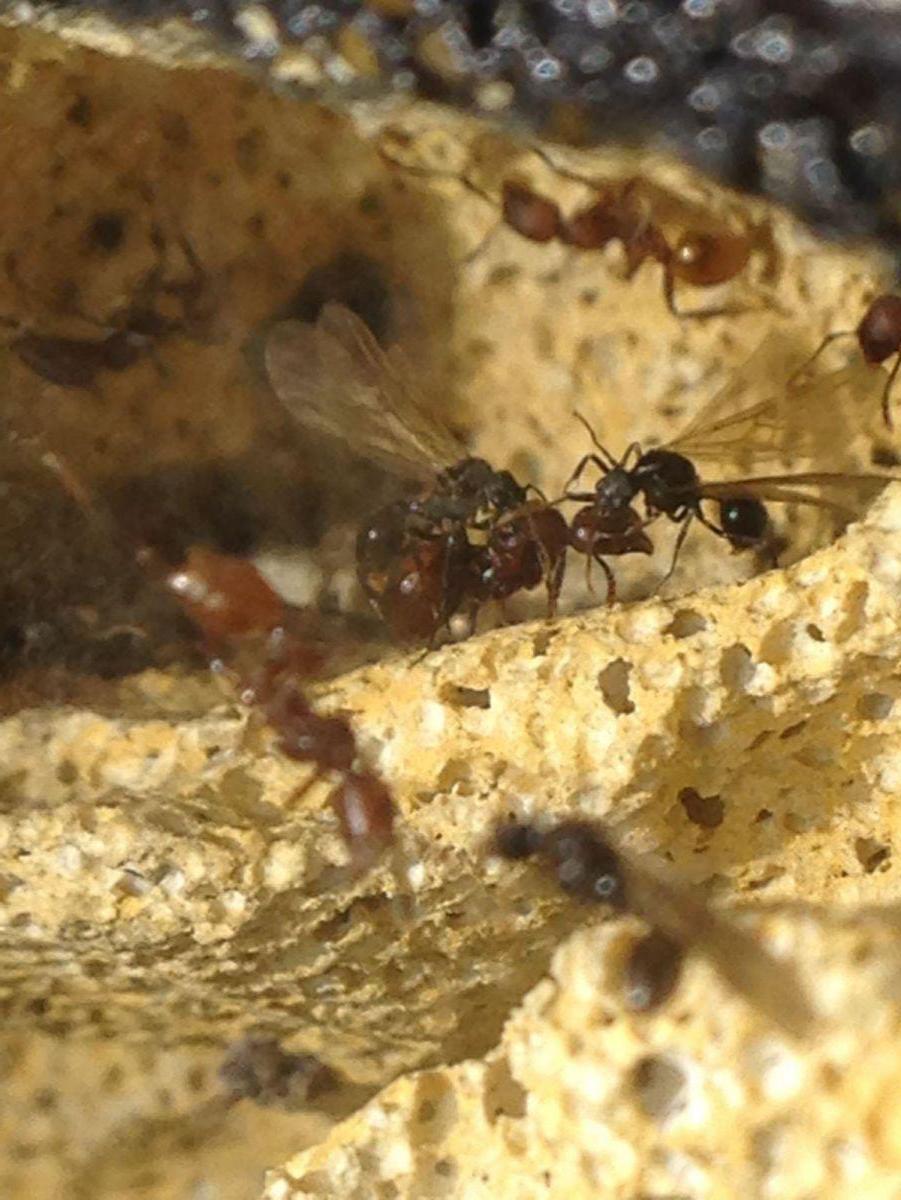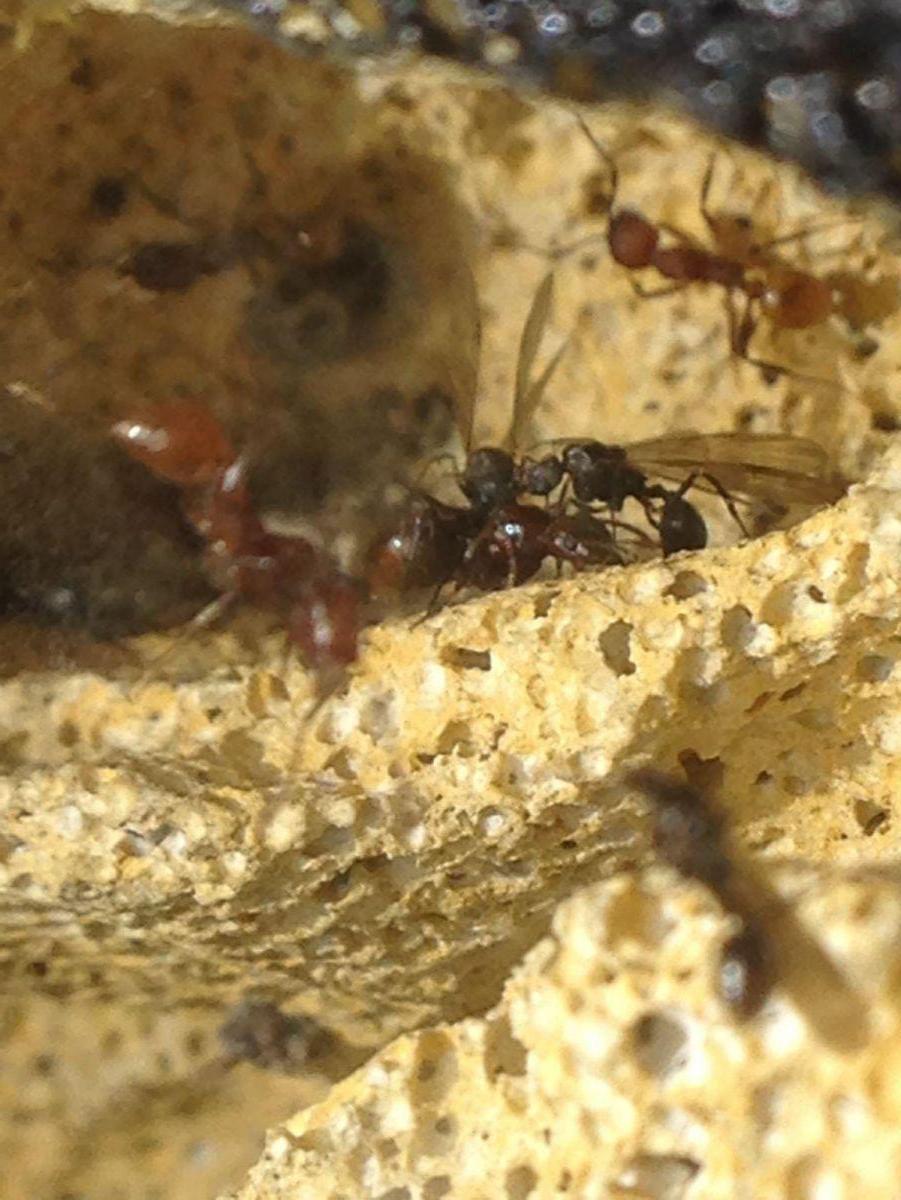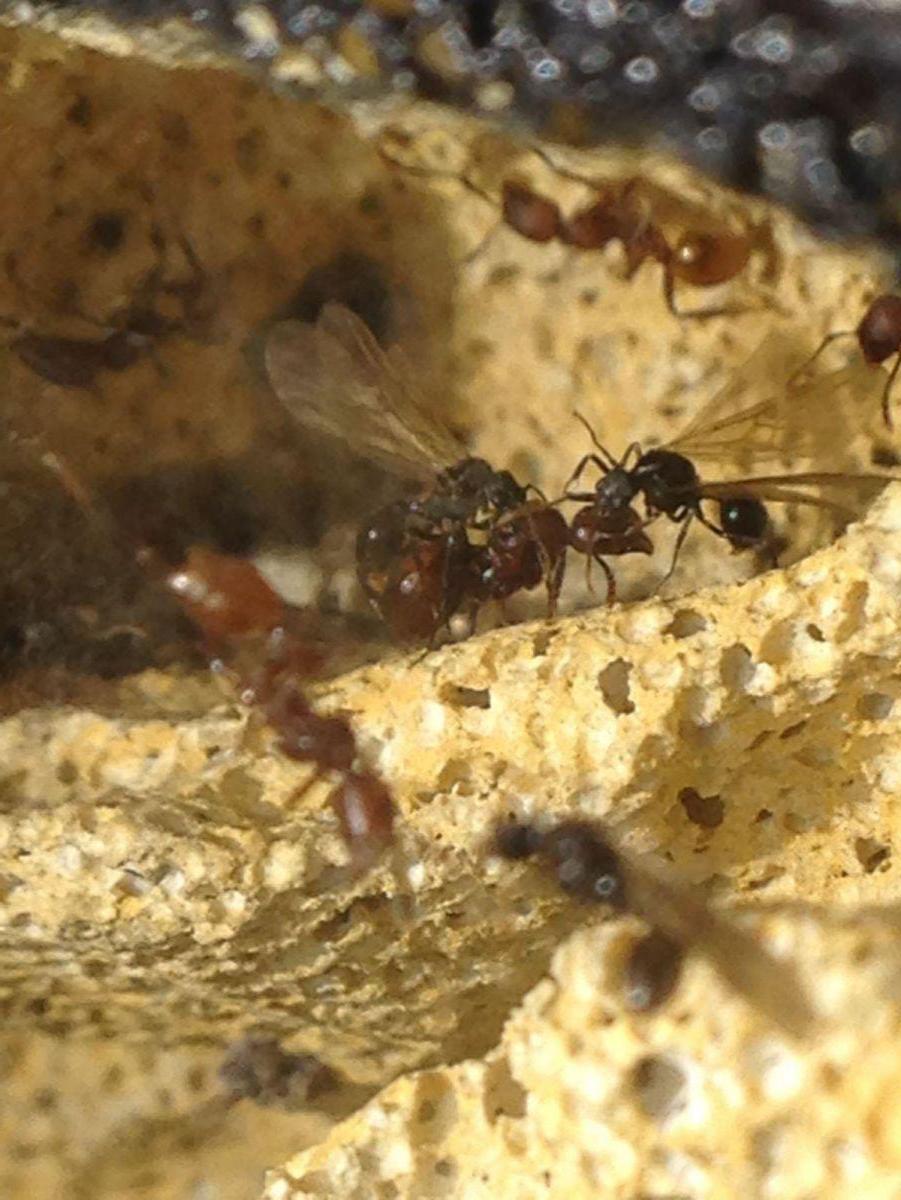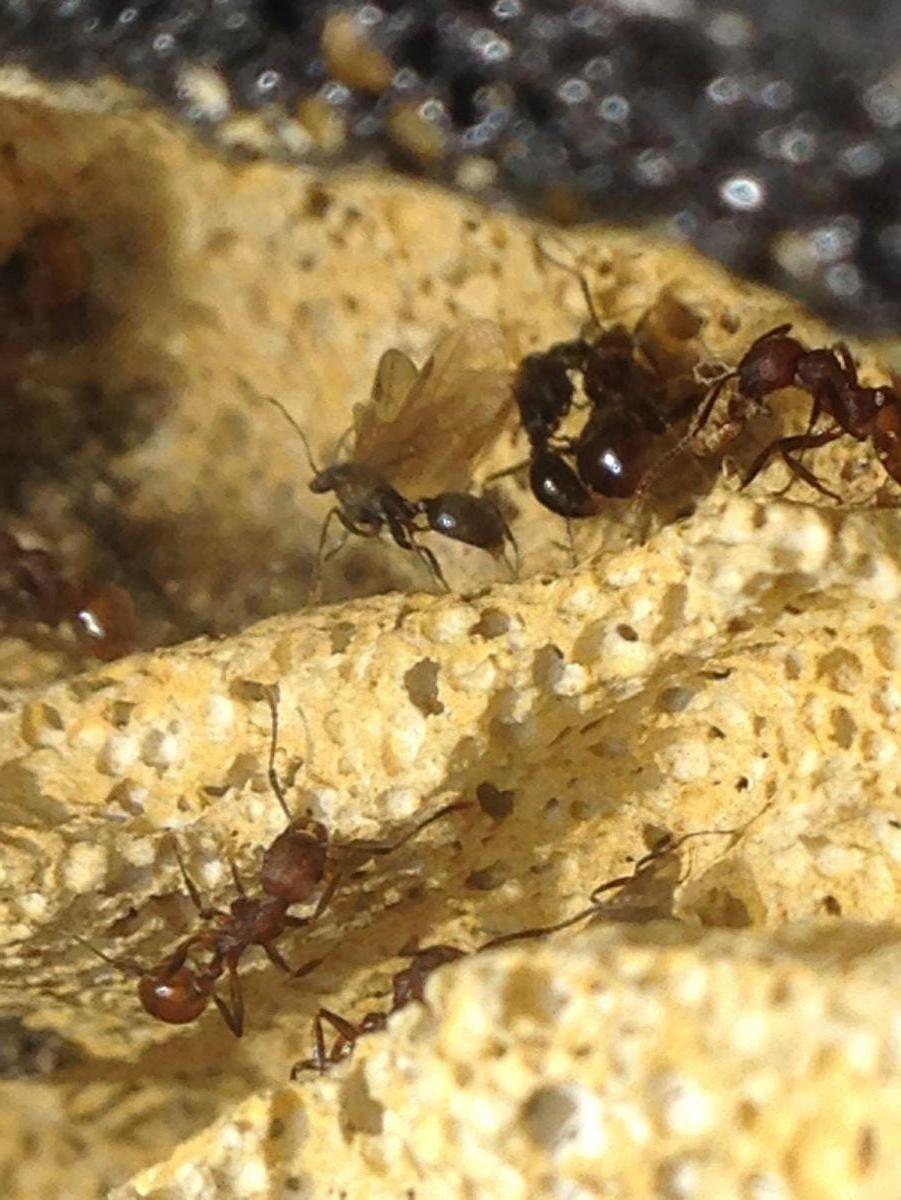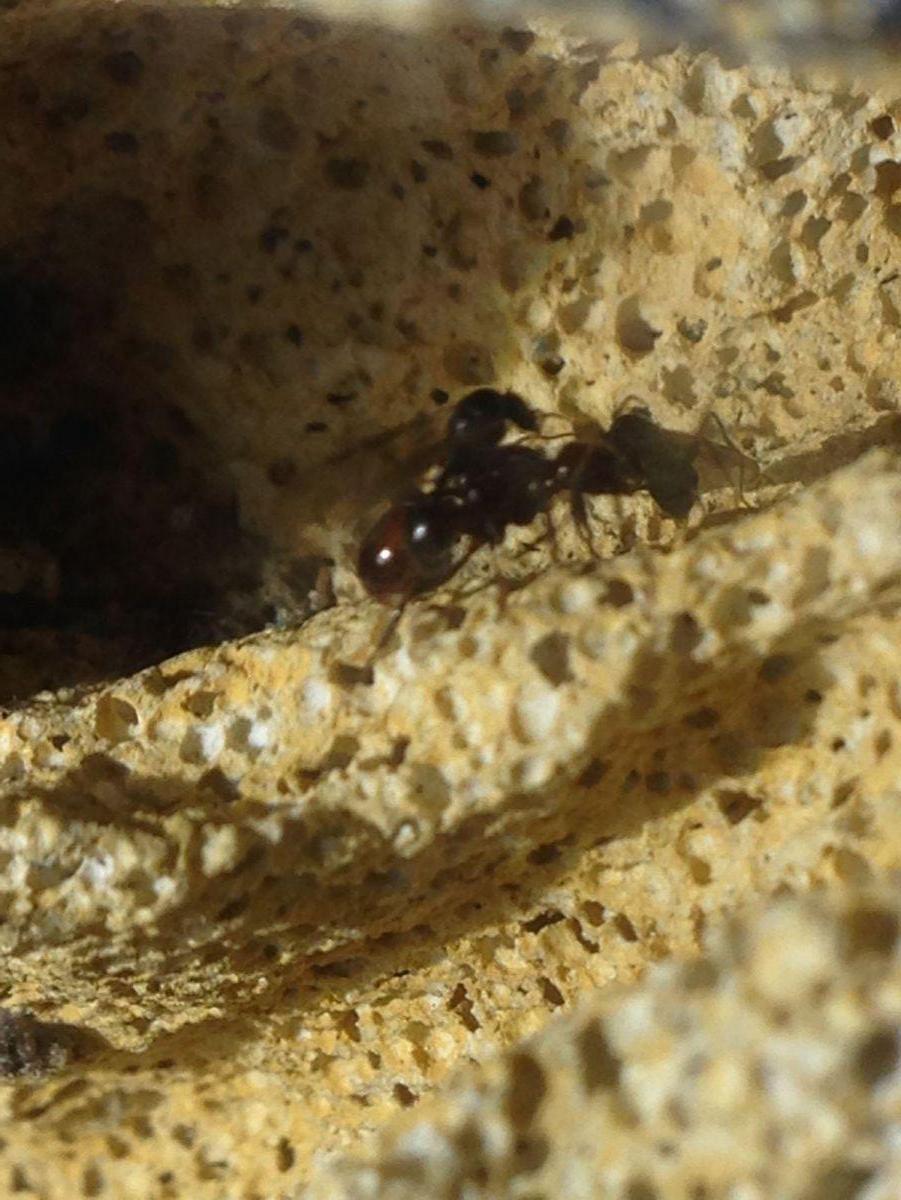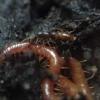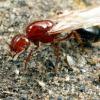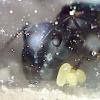All,
Very interesting observation yesterday that I wanted to share. It appears that my Aphaenogaster tennesseensis are mating in the nest. I had suspected this before, but now have caught this on camera. This was a wild caught nest that only had alates, and one of the queens had started laying eggs after shedding her wings in the nest. Now, the other queen in the nest appears to now have mated. After mating, she now appears to havea following in a seperate chamber in the nest - while the other queen and her eggs still inhahabit the biggest portion.Will be interesting to watch to see if the eggs develop.
